
Do you have a question about the ZyXEL Communications UAG Series and is the answer not in the manual?
| Brand | ZyXEL Communications |
|---|---|
| Model | UAG Series |
| Category | Gateway |
| Language | English |
Details the methods for accessing the CLI, including console port, web configurator, Telnet, and SSH.
Describes the different modes (User, Privilege, Configuration, Sub-command) for executing CLI commands.
Explains the 'write' command for saving configuration changes and the importance of saving before logging out.
Explains the initial CLI mode (User mode) and how to enter Privilege mode using 'enable'.
Lists commands used to display various status information about the UAG's operational state.
Lists commands for adding, deleting, and editing managed APs using the CAPWAP protocol.
Details commands for setting up configurations for radios onboard APs.
Lists commands for managing SSID profiles, including creating, renaming, and assigning security profiles.
Explains commands for managing security profiles, including WEP, WPA, and WPA2 settings.
Details commands for configuring MAC address filtering profiles to control network access.
Provides a summary of general commands applicable to various interface types.
Covers commands for configuring basic interface properties, IP addressing, and gateway settings.
Explains commands related to DHCP pools for assigning IP addresses and network configurations to clients.
Covers commands specific to configuring Ethernet interfaces.
Describes how to configure virtual interfaces, leveraging general interface commands.
Covers commands specific to configuring PPPoE/PPTP interfaces for ISP connections.
Explains commands specific to configuring VLAN interfaces.
Lists the interface-group commands used for configuring trunk load balancing and settings.
Provides commands for configuring IP drop-in mode, including activating the feature and setting interfaces.
Introduces IP Policy Routing (IPPR) as a mechanism to override default routing based on administrator-defined policies.
Lists commands for configuring policy routes, including destination, next-hop, bandwidth, and DSCP settings.
Explains the need for static routes to inform the UAG about networks beyond directly connected ones.
Details commands for configuring static routes, including setting destination, next-hop, and priority.
Lists commands for configuring RIP and OSPF routing protocols.
Lists commands for managing zones, including creation, deletion, and interface/tunnel assignment.
Lists commands for configuring DDNS services, including service type, credentials, and WAN interface.
Introduces virtual servers (port forwarding/translation) for making private network servers accessible externally.
Explains 1:1 NAT and Many 1:1 NAT for translating source IP addresses for servers accessing outside clients.
Lists commands for creating, managing, and removing virtual servers and NAT rules.
A step-by-step guide on allowing public access to an HTTP server via NAT and firewall rules.
Lists commands for configuring VPN 1-1 mapping, including pools, rules, and activation.
Lists commands for configuring HTTP redirection rules, including activation and disabling.
Lists commands for configuring SMTP redirection, including interface, server, source, and user settings.
Lists commands for configuring ALG for SIP, H.323, and FTP, including timeouts and transformations.
Lists commands for configuring UPnP and NAT-PMP, including firewall bypass and listening interfaces.
Lists commands for configuring IP/MAC binding, including activation, logging, and exemptions.
Lists commands for enabling Layer-2 isolation on interfaces and managing the white list.
Lists commands for forcing user authentication, including default rules and exceptional services.
Lists commands for enabling the walled garden feature and managing URL entries.
Introduces the UAG's stateful inspection firewall, which screens data packets against access rules.
Lists commands for configuring the firewall, including rule creation, activation, and session limits.
Details sub-commands for firewall rules, covering action, source, destination, and logging.
Explains commands for setting limits on concurrent NAT/firewall sessions per host.
Lists commands for configuring session limits, including activation, limits, and user assignments.
Lists commands for configuring payment services, including account delivery and provider settings.
Explains bandwidth management for controlling network service usage and prioritizing traffic.
Lists commands for configuring bandwidth management policies, including activation and priority.
Details sub-commands for bandwidth management policies, covering DSCP marking, inbound/outbound guarantees.
Explains Virtual Private Network (VPN) and Internet Protocol Security (IPSec) for secure data communications.
Lists commands for configuring IPSec VPNs, including IKE SA, IPSec SA, and VPN concentrator settings.
Details commands for configuring IKE SAs (Internet Key Exchange Security Associations).
Covers commands for IPSec SAs, excluding manual key configurations.
Explains additional commands for IPSec SAs using manual keys for VPN connections.
Lists commands for configuring the VPN concentrator settings.
Explains SSL access policies for limiting user access to specific applications, files, or networks.
Lists commands for configuring SSL VPN access policies, including application objects and endpoint security.
Provides commands for configuring SSL VPN access policies, activation, and application objects.
A tutorial on configuring an SSL VPN rule, including user accounts, IP pools, DNS servers, and endpoint security.
Explains content filtering for blocking web features, specific sites, or categories of web content.
Describes how content filtering policies use schedule, address, and user/group objects to apply filtering.
Provides general commands for content filter configuration, such as activation and policy management.
Details commands for configuring content filtering profiles, including trusted/forbidden lists and feature blocking.
Defines user accounts and their privileges, used in firewall rules and service access control.
Provides a summary of commands for managing usernames and group names.
Lists commands for creating, deleting, and configuring user accounts, including passwords and types.
Lists commands for managing user groups, including creation, deletion, and adding users/groups.
Details commands for configuring user settings like lease times, reauthentication, and simultaneous logins.
Explains address objects for representing IP addresses, ranges, or subnets, and address groups.
Lists commands for creating and managing address objects and address groups.
Details commands for creating and managing IPv4 address objects.
Lists commands for creating and managing address groups.
Lists commands for managing service objects and service groups.
Details commands for creating and managing service objects for TCP, UDP, and ICMP.
Lists commands for creating and managing service groups.
Lists commands for setting up one-time and recurring schedules.
Introduces AAA (Authentication, Authorization, Accounting) servers for network access control.
Describes commands for setting up external authentication servers like AD, LDAP, and RADIUS.
Details commands for configuring the default Active Directory (AD) server settings.
Explains commands for configuring the default LDAP server settings.
Lists commands for setting the default RADIUS server address and service port.
Explains specifying authentication objects containing AAA server information for user authentication.
Lists commands for configuring authentication profiles, including default methods and profile naming.
Describes commands for configuring certificates, including input values and management operations.
Provides a summary of commands for managing certificates and certification requests.
Lists commands for configuring PPPoE and PPTP ISP accounts, including username, password, and encryption.
Lists commands for creating SSL application objects, including RDP, VNC, and weblink types.
Explains Endpoint Security (EPS) for ensuring user computers comply with corporate policies before network access.
Summarizes commands for creating endpoint security objects, including failure messages and profile settings.
Lists commands for creating endpoint security objects, specifying OS, anti-virus, firewall, and file info.
Lists commands for managing dynamic guest accounts, including free user creation and generation.
Introduces the Domain Name System (DNS) and its importance for network access.
Lists commands for configuring DNS settings, including A records, MX records, and service control rules.
Explains how to manage the UAG remotely via Internet, LAN, or DMZ.
Details commands for configuring HTTP and HTTPS access to the UAG web configurator.
Explains Secure Shell (SSH) as a secure protocol for remote management.
Details commands for configuring SSH access, including server settings, certificates, and service rules.
Lists commands for configuring Telnet access, including port numbers and service control rules.
Details commands for configuring SNMP, including community strings, contact info, and host settings.
Lists commands for file management, including applying, copying, deleting, and renaming files.
Explains how to restart the device using the 'reboot' command and the importance of saving changes.
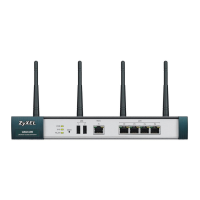

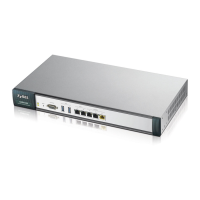
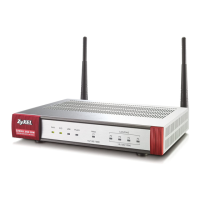
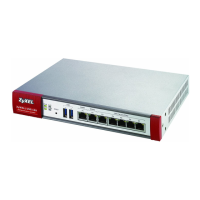


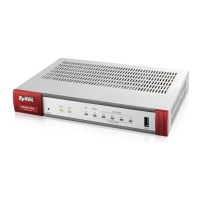
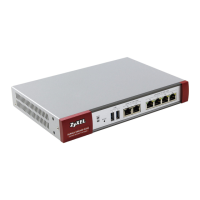
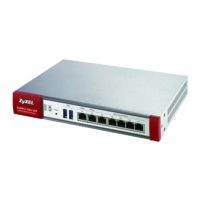
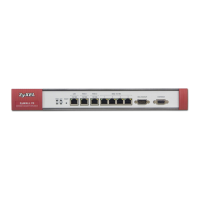
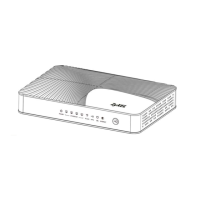
